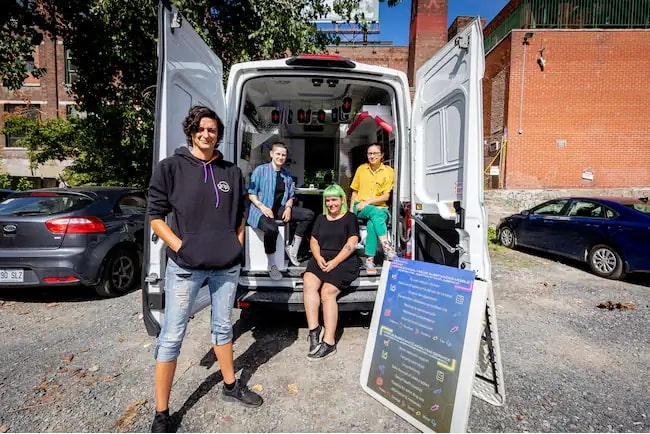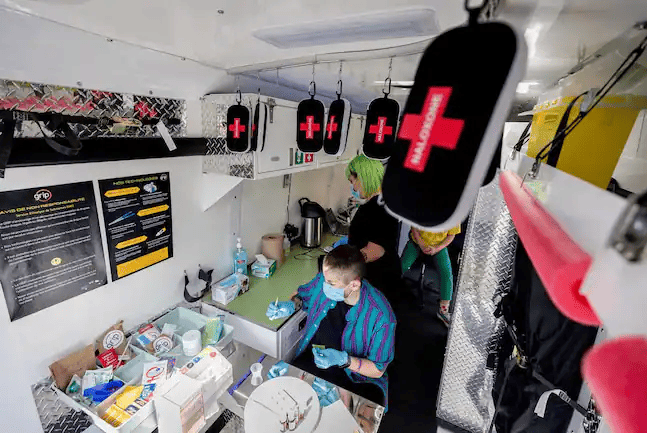Drug checking
You can call or text us to know where we are and will be: 438-887-8338.
To make a request for our services, write to analyse@grip-prevention.ca
What is drug checking?
Drug checking is the process of finding out more information about a drug. Usually this is because a drug was purchased on the unregulated market, and a person wants to find out if it is what they think it is. The purpose of drug checking projects is to reduce harm associated with drug use, and in that, to prevent overdose. We believe in the autonomy of individuals and respect that each person will make their own decisions. We aim to increase the information available to a person, so that their decisions can be as informed as possible.

How does it work?
The service is open to everyone who uses or plans to use drugs who would like to know more about what they intend to use. The service is free, anonymous, and confidential.
In our drug checking service, we encourage the participant to be a part of the decision making process where we decide on which drug checking techniques we will use.
To obtain the most precise and accurate results, we may have to crush or break up and mix the participant’s sample. If this is a barrier for them, we are able to adapt our service to meet their needs. We only need a small amount of a sample, about the size of a sunflower seed. We work with the participant’s limits in terms of the quantity of substance they are willing to lose (none if they don’t want to!), and in terms of the physical transformation of the substance.
Due to the limits of our technologies, we cannot determine the purity or strength of a substance, however we aim to discover as much about the composition as possible.
The entire process takes about 15 to 30 minutes, and the sample can be returned to the participant!
If a person does not want their sample back, or forgets it in the van, we destroy the sample right away.
Where does it happen?
We operate our mobile drug checking service on the island of Montreal. More specifically, we usually operate in the neighbourhood of the Plateau Mont-Royal, near Mont-Royal metro station.
We also operate our service with other partner organizations, like Plein Milieu, Hotel Dieu, La Maison Benoit Labre, Centre SIDA-Secours, and Spectre de Rue.
Our van will hopefully be present at some music festivals in Montreal during the summer, and we can also bring the drug checking van to underground raves.
(contact intervention@grip-prevention.ca). To know where we’ll be this week, take a look at our calendar.

Technologies used
We use three different drug checking technologies. While they are powerful and help us gain information about the sample, we are not able, at the moment, to determine the purity or strength of your substance.
Here is a short description of each drug checking technology we use:

Drug checking reports
We publish reports about the samples we have checked on a bimonthly basis. You can find the reports here.



